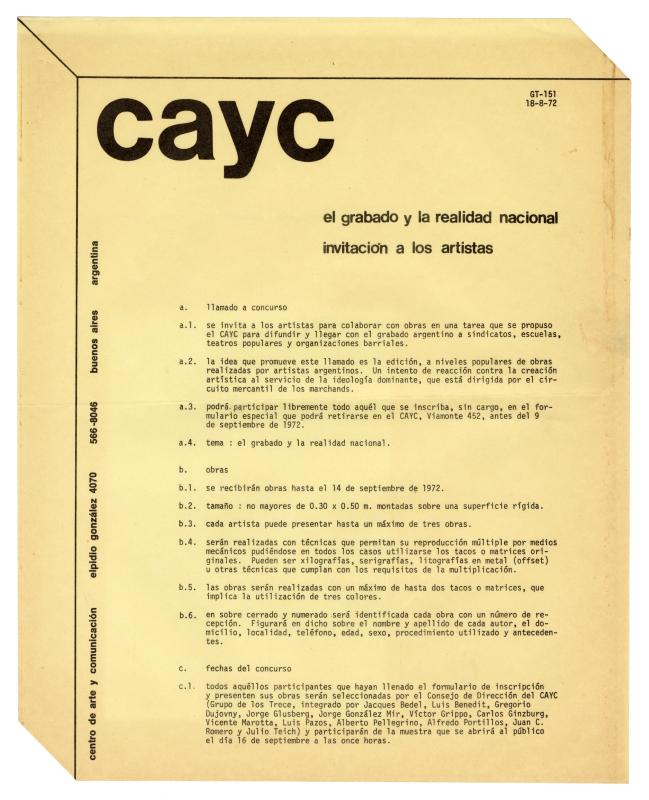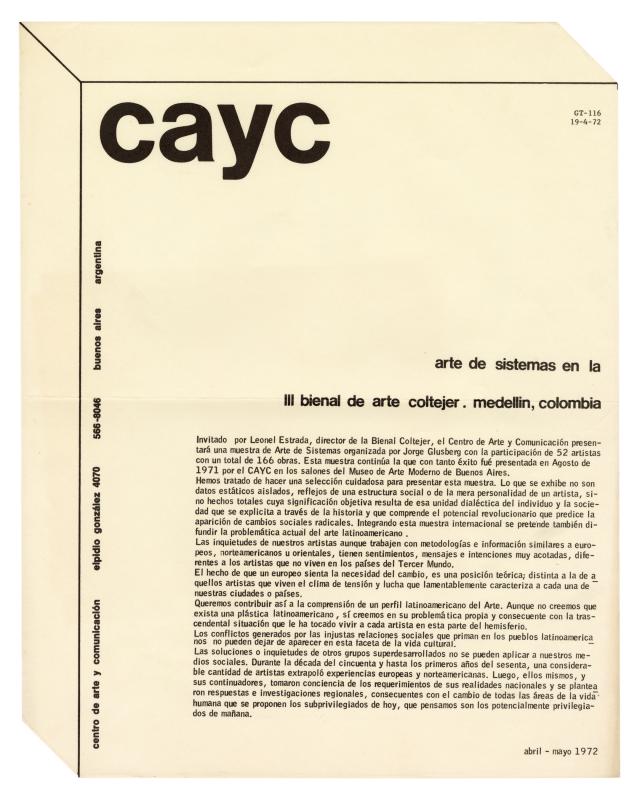Ever since it was founded, the CAYC (Centro de Arte y Comunicación), helmed by the cultural promoter, artist, and businessman Jorge Glusberg, was intended as an interdisciplinary space where an experimental art movement could flourish. The establishment of collaborative networks connecting local and international artists and critics played an important role in this process. The exhibitions shone a light on these exchanges, in which overviews of trends or individual artists provided an introduction to the innovations of international contemporary art and made Argentine and Latin American artists better known on the global scene.
El grabado y la realidad nacional was the CAYC’s way of exploring the democratization of art, both in terms of a strategy for the selection of works and participating artists and a system for presenting works in exhibition spaces. The goal was to “disseminate and distribute Argentinean prints to trade unions, schools, local theaters, and neighborhood organizations.” This announcement, published in August 1972 (GT-151-151-I; doc. no. 1478088), was a call for artists to submit works “that could be copied multiple times by mechanical means.” A jury made up of members of the Grupo de los Trece would select works to be shown at the CAYC. Visitors to the exhibition Arte de Sistemas II could then vote for ten of the pieces. Mass produced copies would reach “segments of the population that do not have the economic resources to purchase artworks.” The CAYC’s project was an “attempt to push back against the concept of art created in the service of the dominant ideology, which is ruled by art dealers’ commercial circuits.”
The exhibition Arte de Sistemas II (Buenos Aires, September 1972) was shown at three different venues: Arte de Sistemas Internacional (Museo de Arte Moderno in Buenos Aires), Arte de Sistemas Argentina (Centro de Arte y Comunicación), and CAYC al Aire Libre. Arte e Ideología (Plaza Roberto Arlt), as well as a performance of experimental music.
The Grupo de los Trece was an art group and standard bearer for the CAYC. It was founded in late 1971 and had its official debut in May of the following year, at the III Bienal de Arte Coltejer in Colombia (GT-116; doc. no. 1476404). The original members included Jacques Bedel, Luis (Fernando) Benedit, Gregorio Dujovny, Carlos Ginzburg, Víctor Grippo, Jorge González Mir, Jorge Glusberg, Vicente Marotta, Luis Pazos, Alberto Pellegrino, Alfredo Portillos, Juan Carlos Romero, and Julio Teich. Over time, some of these artists moved on and others joined the group.


